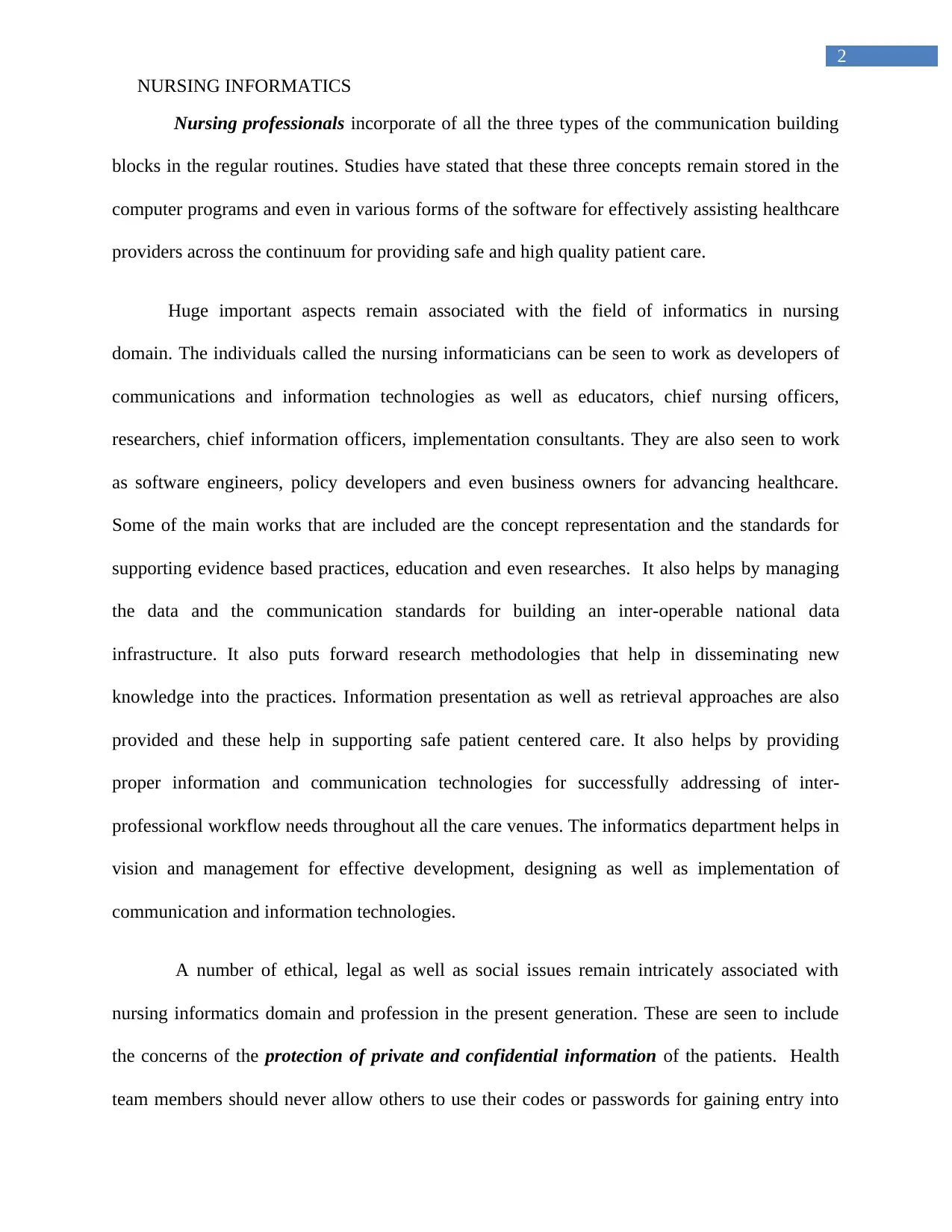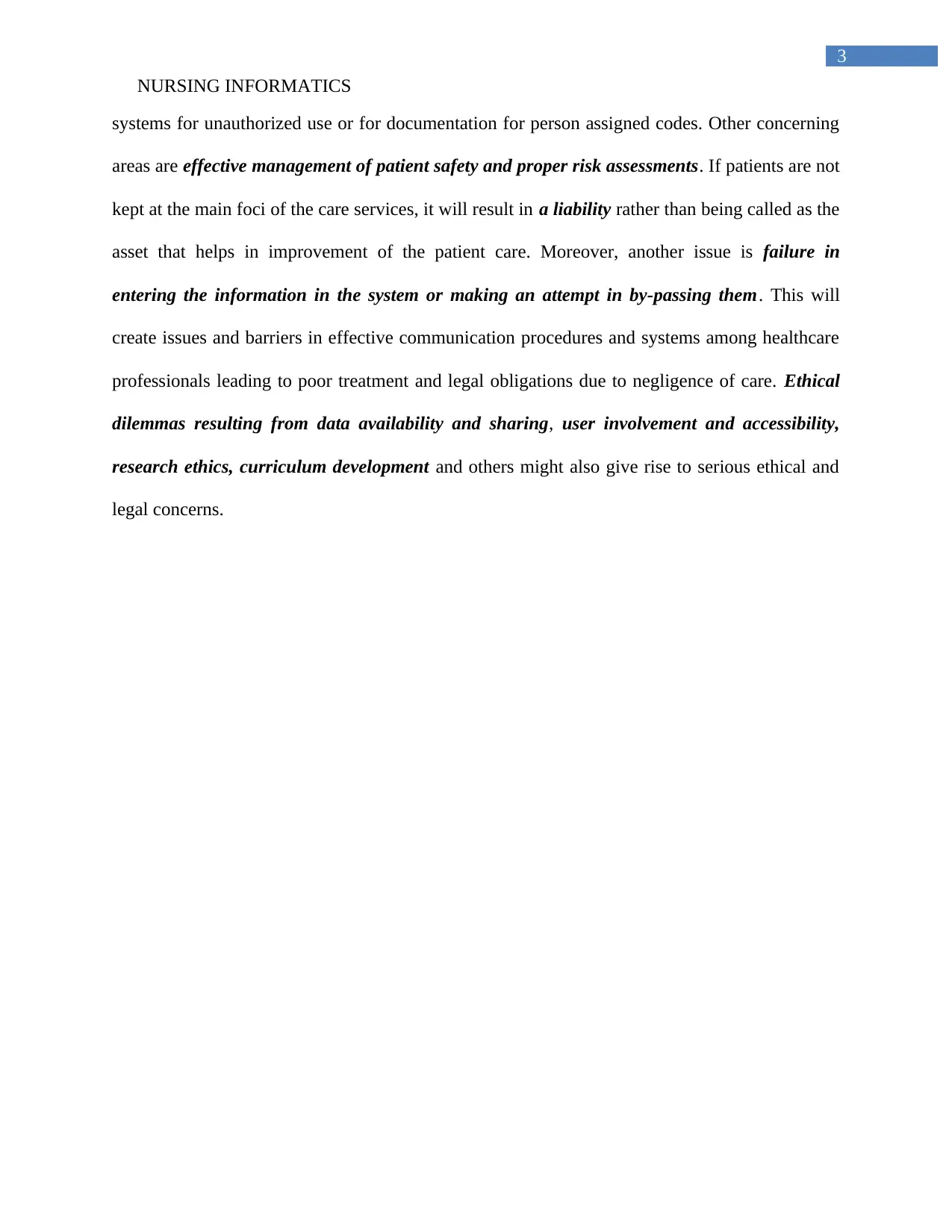Nursing Informatics - Integration of Nursing Science and Information Management
VerifiedAdded on 2023/05/29
|4
|820
|407
AI Summary
Nursing informatics integrates nursing science with information management and analytical sciences to identify, manage, and communicate data, information, and knowledge in nursing practices. This article explores the technologies and ethical, legal, and social issues associated with the field.
Contribute Materials
Your contribution can guide someone’s learning journey. Share your
documents today.
1 out of 4









![[object Object]](/_next/static/media/star-bottom.7253800d.svg)